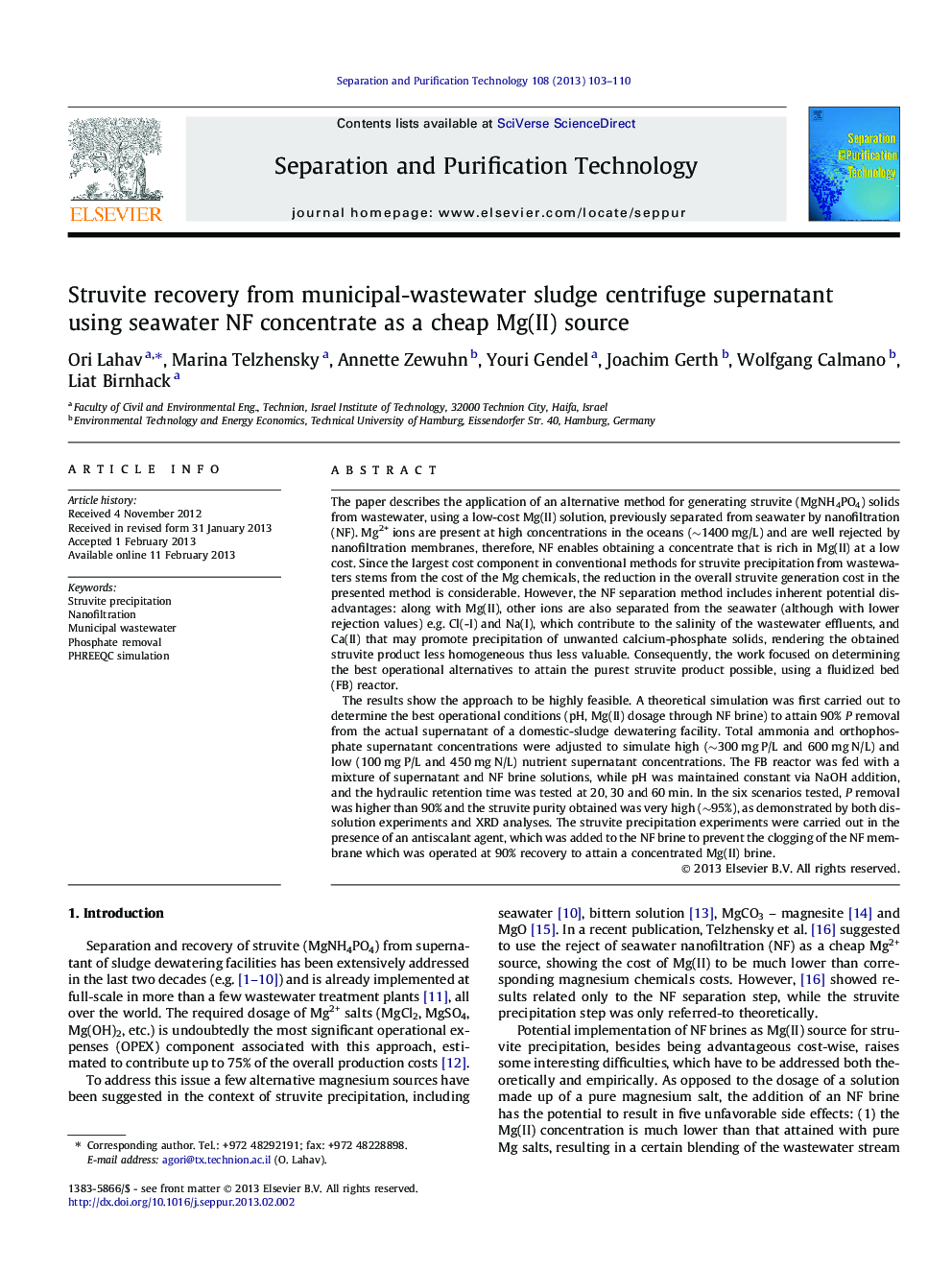| کد مقاله | کد نشریه | سال انتشار | مقاله انگلیسی | نسخه تمام متن |
|---|---|---|---|---|
| 641867 | 1457011 | 2013 | 8 صفحه PDF | دانلود رایگان |

The paper describes the application of an alternative method for generating struvite (MgNH4PO4) solids from wastewater, using a low-cost Mg(II) solution, previously separated from seawater by nanofiltration (NF). Mg2+ ions are present at high concentrations in the oceans (∼1400 mg/L) and are well rejected by nanofiltration membranes, therefore, NF enables obtaining a concentrate that is rich in Mg(II) at a low cost. Since the largest cost component in conventional methods for struvite precipitation from wastewaters stems from the cost of the Mg chemicals, the reduction in the overall struvite generation cost in the presented method is considerable. However, the NF separation method includes inherent potential disadvantages: along with Mg(II), other ions are also separated from the seawater (although with lower rejection values) e.g. Cl(-I) and Na(I), which contribute to the salinity of the wastewater effluents, and Ca(II) that may promote precipitation of unwanted calcium-phosphate solids, rendering the obtained struvite product less homogeneous thus less valuable. Consequently, the work focused on determining the best operational alternatives to attain the purest struvite product possible, using a fluidized bed (FB) reactor.The results show the approach to be highly feasible. A theoretical simulation was first carried out to determine the best operational conditions (pH, Mg(II) dosage through NF brine) to attain 90% P removal from the actual supernatant of a domestic-sludge dewatering facility. Total ammonia and orthophosphate supernatant concentrations were adjusted to simulate high (∼300 mg P/L and 600 mg N/L) and low (100 mg P/L and 450 mg N/L) nutrient supernatant concentrations. The FB reactor was fed with a mixture of supernatant and NF brine solutions, while pH was maintained constant via NaOH addition, and the hydraulic retention time was tested at 20, 30 and 60 min. In the six scenarios tested, P removal was higher than 90% and the struvite purity obtained was very high (∼95%), as demonstrated by both dissolution experiments and XRD analyses. The struvite precipitation experiments were carried out in the presence of an antiscalant agent, which was added to the NF brine to prevent the clogging of the NF membrane which was operated at 90% recovery to attain a concentrated Mg(II) brine.
► Seawater NF retentate was tested as Mg(II) source for struvite recovery from WW.
► The process proved highly feasible at HRT of 20 min and Δ[Mg(II)]:PT of 1:1 (molar).
► Orthophosphate removal efficiency from centrifuge supernatant was >90%.
► Almost pure struvite was attained in all experiments, regardless of [PT].
► Use of the concept close to shore may reduce overall struvite recovery costs by 25%.
Journal: Separation and Purification Technology - Volume 108, 19 April 2013, Pages 103–110